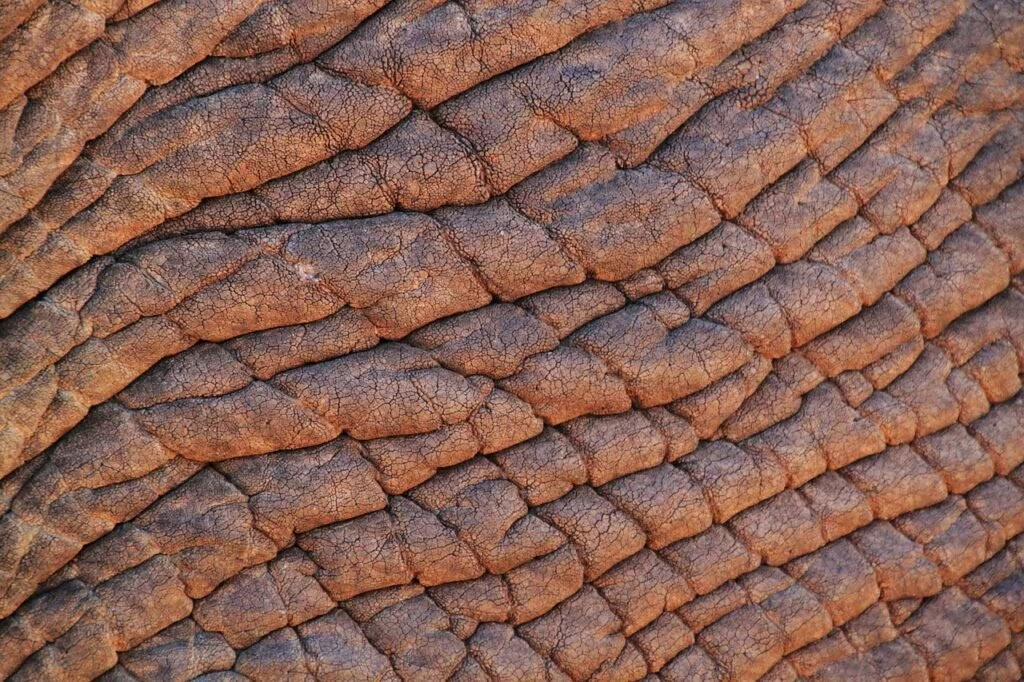Unprecedented Preservation in the Wyoming Badlands
In a discovery that is fundamentally reshaping our understanding of dinosaur anatomy, paleontologists have unearthed an exceptionally rare, “mummified” juvenile duck-billed dinosaur in the Wyoming badlands. The fossil, identified as a young Edmontosaurus annectens and affectionately nicknamed “Ed Jr.,” is one of the most significant finds of its kind, preserving not just bones but extensive soft tissue, including skin impressions and, most remarkably, specialized structures on its feet.
This juvenile specimen, found within the renowned Lance Formation, provides a level of detail previously unimaginable for hadrosaurs—the dominant herbivores of the Late Cretaceous period. While the preservation of dinosaur skin is rare, the discovery of what appears to be hoof-like pads or thick, specialized soft tissue on the feet challenges decades of assumptions about how these massive animals walked and supported their weight.

The Significance of “Ed Jr.”: A Window into Hadrosaur Anatomy
Edmontosaurus annectens was a large, common species of hadrosaur, often depicted in reconstructions as having broad, elephant-like feet with fleshy pads, suggesting a sprawling, heavy gait. However, “Ed Jr.” offers evidence for a more specialized foot structure.
In paleontology, the term “mummified” refers not to the preservation of internal organs or flesh in the traditional sense, but to the rapid burial and mineralization process that preserves impressions of the skin and other soft tissues before decay sets in. Only a handful of such specimens exist globally, making each one invaluable.
What Makes This Fossil Unique?
The preservation of “Ed Jr.” is exceptional, offering several key insights that differentiate it from other famous hadrosaur finds, such as the adult Edmontosaurus nicknamed “Dakota” discovered in North Dakota:
- Juvenile Status: Studying a juvenile allows researchers to track developmental changes in the species, potentially revealing how foot structure changed as the dinosaur grew to its massive adult size.
- Extensive Skin Impressions: The fossil retains large sections of skin, allowing scientists to analyze the texture, scale patterns, and overall physical appearance of the animal with high fidelity.
- The Foot Structure: The most revolutionary aspect is the clear evidence of thick, specialized soft tissue around the toes, which researchers describe as resembling pads or even rudimentary hoofs. This suggests a far more robust and specialized weight-bearing structure than previously modeled.
This level of detail moves the scientific community beyond mere skeletal reconstruction, providing a high-resolution view of the dinosaur’s external biology.
Challenging Assumptions: The Mystery of the Hoofed Feet
The presence of these specialized foot structures fundamentally alters the prevailing scientific consensus regarding hadrosaur locomotion. For decades, hadrosaurs were often compared to modern large mammals, such as elephants or rhinoceroses, which possess large, fleshy pads designed to distribute immense weight over soft ground.
However, the structures observed on “Ed Jr.” suggest a different adaptation. If these are indeed thick, hoof-like pads, they imply:
- Specialized Locomotion: The structures might have provided better traction or protection against rough, hard terrain, suggesting Edmontosaurus was not solely confined to soft, marshy environments.
- Weight Distribution: The pads could have supported weight more efficiently, perhaps allowing for faster or more sustained movement than previously assumed for such large herbivores.
- Evolutionary Link: This feature could represent an evolutionary intermediate or a specialized adaptation within the hadrosaur lineage, linking them to other groups with similar foot protection.

The Role of Soft Tissue Preservation
Soft tissue preservation is a geological and biological miracle. It requires a specific set of circumstances to occur:
- Rapid Burial: The carcass must be buried almost immediately after death, shielding it from scavengers and microbial decay.
- Anaerobic Environment: The burial environment must be low in oxygen to halt decomposition.
- Mineralization: Groundwater rich in minerals must quickly infiltrate the tissues, replacing the organic material with rock, thus creating a detailed cast of the skin.
In the case of “Ed Jr.,” the preservation is so fine that researchers can analyze the texture and arrangement of the scales, offering clues about the dinosaur’s metabolism and thermoregulation.
The Rarity of Soft Tissue Fossils
The discovery of “Ed Jr.” is significant because soft tissues—skin, muscle, and internal organs—are composed of organic material that typically decays rapidly. The fossil record is overwhelmingly dominated by bones and teeth, which are robust and mineralized.
Only a tiny fraction of dinosaur remains include skin impressions. Before “Ed Jr.,” the most famous example was the aforementioned “Dakota,” an adult Edmontosaurus found in 1999. While Dakota also provided extensive skin data, “Ed Jr.’s” juvenile status and the unique foot structures offer complementary and crucial information.
Context in the Late Cretaceous
Edmontosaurus annectens lived during the very end of the Cretaceous period, roughly 66 to 70 million years ago, just prior to the mass extinction event. Understanding the biomechanics of these animals—how they moved, fed, and interacted with their environment—is vital for constructing a complete picture of the ecosystem that existed immediately before the end of the Age of Dinosaurs. The specialized feet suggest a highly adapted creature capable of traversing varied terrain.

Key Takeaways and Future Research
This discovery reinforces the idea that the dinosaur fossil record still holds revolutionary secrets, particularly concerning soft tissue anatomy. The ongoing study of “Ed Jr.” promises to redefine the morphology of hadrosaurs.
Key Insights from the “Ed Jr.” Discovery:
- Redefining Hadrosaur Feet: The fossil provides the first clear evidence of specialized, hoof-like soft tissue pads on a hadrosaur, moving away from simple elephant-pad models.
- Exceptional Preservation: As a “mummified” specimen, it offers unparalleled data on Edmontosaurus scale patterns and skin texture.
- Juvenile Data: Studying a juvenile specimen provides crucial information on the growth and development of these massive animals.
- Wyoming’s Importance: The Lance Formation continues to be a critical location for finding rare, high-quality Late Cretaceous fossils.
What’s Next?
Researchers are now employing advanced imaging techniques, such as CT scanning and high-resolution photography, to further analyze the internal structure of the soft tissue impressions without damaging the fragile fossil. This detailed analysis will confirm the exact composition and function of the foot pads, potentially leading to new, more accurate reconstructions of hadrosaur posture and gait in museums worldwide. The findings will be crucial for understanding the evolutionary pressures that shaped the locomotion of these successful herbivores.
Conclusion
The discovery of “Ed Jr.” is a landmark moment in paleontology. By preserving the external anatomy of a juvenile Edmontosaurus annectens, this fossil offers a tangible connection to the Late Cretaceous world. The revelation of specialized, hoof-like foot structures underscores how much remains unknown about dinosaur biology and serves as a powerful reminder that the most significant discoveries often lie not just in the bones, but in the fleeting impressions of soft tissue that nature rarely chooses to preserve. This specimen will serve as a reference point for hadrosaur studies for generations to come.
Original author: Patrick Pester
Originally published: October 29, 2025
Editorial note: Our team reviewed and enhanced this coverage with AI-assisted tools and human editing to add helpful context while preserving verified facts and quotations from the original source.
We encourage you to consult the publisher above for the complete report and to reach out if you spot inaccuracies or compliance concerns.

